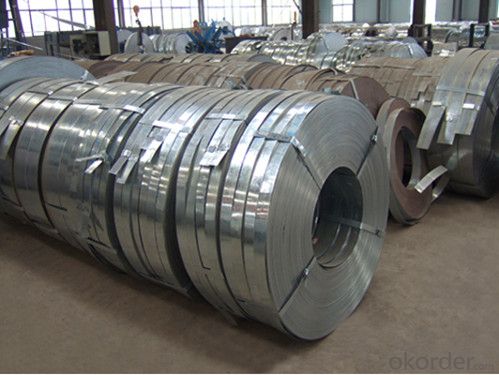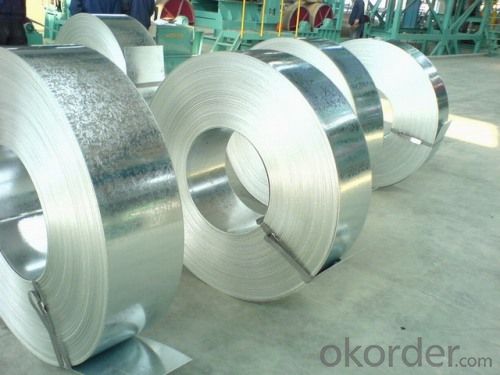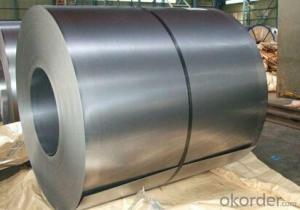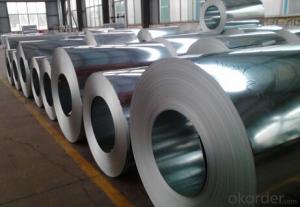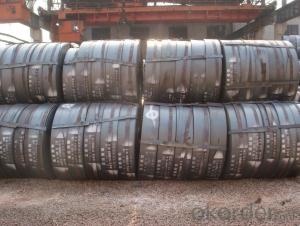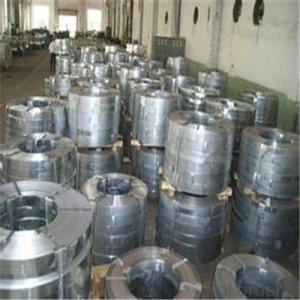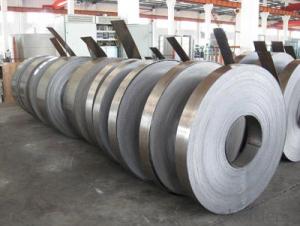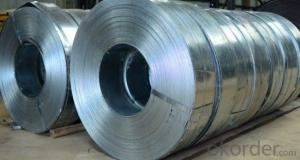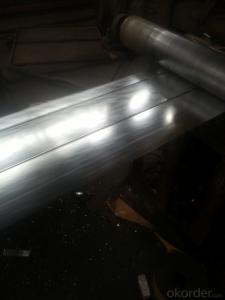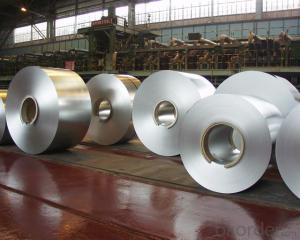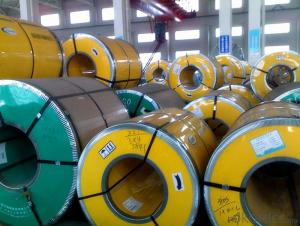Galvanized Steel Strip with High Quality-DX51D+Z 700*2.0mm
- Loading Port:
- China main port
- Payment Terms:
- TT OR LC
- Min Order Qty:
- 50 m.t
- Supply Capability:
- 10000 m.t/month
OKorder Service Pledge
OKorder Financial Service
You Might Also Like
Galvanized Steel Strip with High Quality-DX51D+Z 700*2.0mm
Product Description:
Specifications:
1. Thickness: 2.0mm
2. Width: 700mm
3. Material: DX51D+Z
4. ID: 508mm or 610mm
5. Spangle: Regular spangle or zero spangle
6. Surface treatment: chromated or no chromated; oiled or no oiled.
Advantages of Galvanized Steel Strip with High Quality-DX51D+Z 700*2.0mm:
1. Uniform coating;
2. Strong adhesion;
3. Strong corrosion resistant ability
Usage of Galvanized Steel Strip with High Quality-DX51D+Z 700*2.0mm:
1. Making pipes, like Greenhouse tubes, drinking water pipe, heating pipe, gas pipe and so on;
2. Used in automobile;
3. Used in construction;
4. Used in agriculture, fishery and so on.
FAQ of Galvanized Steel Strip with High Quality-DX51D+Z 700*2.0mm:
Q1: How soon can we receive the product after purchasement?
A1: Within three days of placing an order, we will begin production. The specific shipping date is dependent upon international and government factors, but is typically one month-two months.
Q2: How do you guarantee the quality of our products?
A2: We have established an advanced quality management system which conducts strict quality tests at every step, from raw materials to the final product. At the same time, we provide extensive follow-up service assurances as required.
Q3: The prices are invoicing on theoritical weight or on actual weight?
A3: We can do it in both manners, according to the customers' request.
Images of Galvanized Steel Strip with High Quality-DX51D+Z 700*2.0mm:
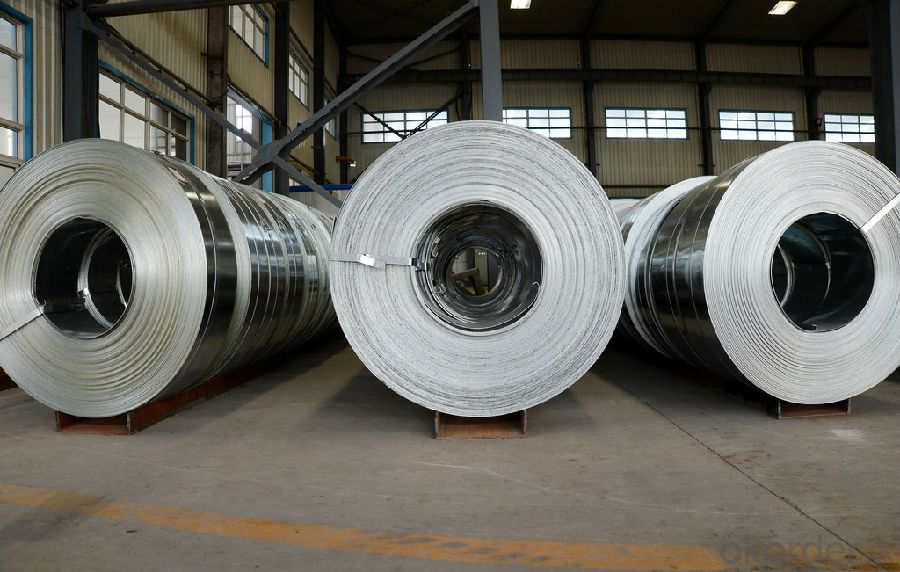
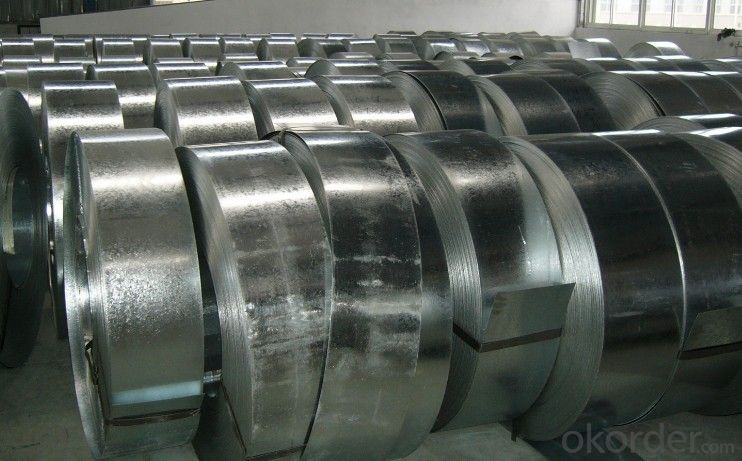
- Q: Can steel strips be coated with protective coatings?
- Yes, steel strips can be coated with protective coatings.
- Q: What are the specifications for steel strips used in the production of fasteners?
- The specifications for steel strips used in the production of fasteners can vary depending on the specific requirements of the fastener being produced. However, some common specifications include the type of steel used (such as carbon steel or stainless steel), the thickness and width of the strip, the level of hardness required, and any specific surface finishes or coatings needed. It is important to consult the industry standards or specific fastener design guidelines to determine the precise specifications for the steel strips in question.
- Q: What are the common grades of steel used for strips?
- The common grades of steel used for strips include low carbon steel, medium carbon steel, and high carbon steel.
- Q: What are the different types of heat treatments for steel strips?
- There are several different types of heat treatments that can be applied to steel strips to enhance their properties and meet specific requirements. Some of the common heat treatments for steel strips include: 1. Annealing: This process involves heating the steel strips to a high temperature and then slowly cooling them, usually in a controlled atmosphere. Annealing helps to relieve internal stresses, improve machinability, and enhance the ductility and toughness of the steel. 2. Hardening: Hardening is a heat treatment technique that involves heating the steel strips to a high temperature and then rapidly cooling them, typically using quenching in oil or water. This process increases the hardness and strength of the steel, making it suitable for applications where wear resistance and durability are crucial. 3. Tempering: Tempering is often performed after the hardening process. It involves heating the hardened steel strips to a lower temperature and then slowly cooling them. This treatment helps to reduce the brittleness caused by the hardening process and improves the toughness and ductility of the steel. 4. Normalizing: Normalizing is a heat treatment method similar to annealing, but with a faster cooling rate. The steel strips are heated to a temperature slightly above the critical point and then cooled in still air. Normalizing helps to refine the grain structure, improve the overall mechanical properties, and enhance the machinability of the steel. 5. Stress relieving: This heat treatment is performed to relieve the internal stresses that can develop during manufacturing processes such as cutting, bending, or welding. The steel strips are heated to a specific temperature and then slowly cooled. Stress relieving helps to prevent distortion or cracking and improves dimensional stability. 6. Case hardening: Case hardening is a surface treatment method that aims to increase the hardness and wear resistance of the outer layer of the steel strips while maintaining a tough and ductile core. This is achieved by heating the steel strips in the presence of a carbon-rich atmosphere or by introducing carbon-rich compounds onto the surface and then quenching them. 7. Solution annealing: This treatment is primarily used for stainless steel strips. It involves heating the steel strips to a high temperature followed by rapid cooling to dissolve any carbides or other precipitates. Solution annealing helps to restore the corrosion resistance and mechanical properties of stainless steel. These are just a few examples of the various heat treatments available for steel strips. The choice of heat treatment depends on the specific requirements of the application and desired properties of the steel.
- Q: How do steel strips respond to different surface treatments?
- Steel strips can respond differently to various surface treatments depending on the specific treatment used. Some common surface treatments for steel strips include galvanizing, painting, and coating. Galvanizing involves the application of a protective zinc coating to the surface of the steel strip. This treatment provides excellent corrosion resistance, as the zinc acts as a sacrificial anode, protecting the underlying steel from oxidation. Galvanized steel strips are often used in outdoor applications where they are exposed to moisture and harsh environmental conditions. Painting is another common surface treatment for steel strips. It involves the application of a paint or coating to the surface, which not only enhances the appearance of the steel but also provides a barrier against corrosion. Painted steel strips can be customized in terms of color and finish, making them suitable for a wide range of applications, including construction, automotive, and consumer goods. Coating is a surface treatment where a thin layer of material is applied to the steel strip to improve its performance characteristics. Examples of coatings include epoxy, polyester, and polyurethane. These coatings can provide additional protection against corrosion, abrasion, and chemical exposure, depending on the specific requirements of the application. In summary, steel strips respond differently to various surface treatments. Galvanizing offers excellent corrosion resistance, painting enhances appearance and provides a barrier against corrosion, while coatings provide additional protection against specific environmental factors. The choice of surface treatment will depend on the intended application and the desired performance characteristics of the steel strip.
- Q: How do steel strips perform in load-bearing applications?
- Steel strips perform exceptionally well in load-bearing applications due to their high strength and durability. They can withstand heavy loads and distribute them evenly, providing structural stability and support. Additionally, steel strips have excellent resistance to wear, corrosion, and impact, making them suitable for various load-bearing purposes, such as construction, automotive, and manufacturing industries.
- Q: How do steel strips contribute to sustainable manufacturing practices?
- Steel strips contribute to sustainable manufacturing practices in several ways. Firstly, steel is a highly durable and long-lasting material, allowing for the production of products that have a longer lifespan and reduced need for replacement. This helps to minimize waste and the overall environmental impact of manufacturing processes. Additionally, steel is a highly recyclable material, meaning that steel strips can be easily repurposed and reused in future manufacturing processes. This not only reduces the demand for new steel production but also saves energy and reduces greenhouse gas emissions associated with mining and extracting raw materials. Moreover, steel strips can be produced using energy-efficient techniques, such as using recycled steel or utilizing advanced technologies like electric arc furnaces. These methods help to lower energy consumption and decrease the carbon footprint of steel production. Lastly, steel strips are versatile and can be used in various industries, including automotive, construction, appliances, and packaging, among others. Their wide range of applications allows for resource optimization and promotes a circular economy, where materials are continuously reused rather than disposed of after a single use. Overall, steel strips support sustainable manufacturing practices by promoting durability, recyclability, energy efficiency, and resource optimization, making them an essential component in the move towards more environmentally friendly and responsible production processes.
- Q: How are steel strips processed for engraving?
- Steel strips are typically processed for engraving by first cleaning and preparing the surface to remove any dirt, oil, or rust. Then, a design or pattern is either etched or engraved onto the steel strip using specialized tools or machines. This process may involve chemical etching, laser engraving, or mechanical engraving techniques, depending on the desired outcome. After engraving, the steel strips may undergo further treatments such as polishing or coating to enhance the appearance and durability of the engraved design.
- Q: What are the different surface etching methods for steel strips?
- There are several different surface etching methods for steel strips, including chemical etching, electrochemical etching, and laser etching. Chemical etching involves immersing the steel strip in a corrosive chemical solution to remove a thin layer of material and create a desired pattern or texture. Electrochemical etching uses an electric current to dissolve the metal surface, resulting in controlled etching. Laser etching utilizes a high-powered laser to selectively remove material from the steel strip, creating precise and detailed markings or patterns.
- Q: What are the chemical analysis techniques for steel strips?
- Steel strips can undergo various chemical analysis techniques to determine their composition and properties. These techniques encompass: 1. Optical Emission Spectrometry (OES): By exciting the elements within the steel sample through a high-frequency spark, the emitted light is analyzed to ascertain the elemental composition of the steel strip. 2. X-ray Fluorescence (XRF): Employing non-destructive methods, XRF involves bombarding the steel strip with X-rays to prompt the emission of characteristic fluorescent X-rays from the steel's atoms. These emitted X-rays can then be measured to determine the elemental composition. 3. Inductively Coupled Plasma Spectrometry (ICP): ICP involves ionizing the steel sample's elements using high-energy plasma, followed by detection and quantification of the ionized elements using a mass spectrometer. This allows for precise determination of the elemental composition. 4. Atomic Absorption Spectrometry (AAS): AAS entails measuring the absorption of light by specific atoms within the steel strip. By comparing the absorption of light at particular wavelengths to calibration standards, the concentration of elements can be determined. 5. Carbon and Sulfur Analysis: Analyzing carbon and sulfur content is crucial for steel strips. Combustion techniques such as LECO or combustion-infrared methods involve burning the steel strip and measuring the gases released to determine the carbon and sulfur content. 6. Differential Scanning Calorimetry (DSC): DSC analyzes the thermal properties of steel strips. By measuring the heat flow into or out of the steel strip as temperature changes, valuable information about phase transitions, purity, and thermal stability can be obtained. These examples represent only a fraction of the chemical analysis techniques commonly employed for steel strips. The choice of technique depends on the specific analysis requirements, objectives, and the availability of equipment and expertise.
Send your message to us
Galvanized Steel Strip with High Quality-DX51D+Z 700*2.0mm
- Loading Port:
- China main port
- Payment Terms:
- TT OR LC
- Min Order Qty:
- 50 m.t
- Supply Capability:
- 10000 m.t/month
OKorder Service Pledge
OKorder Financial Service
Similar products
Hot products
Hot Searches
Related keywords




